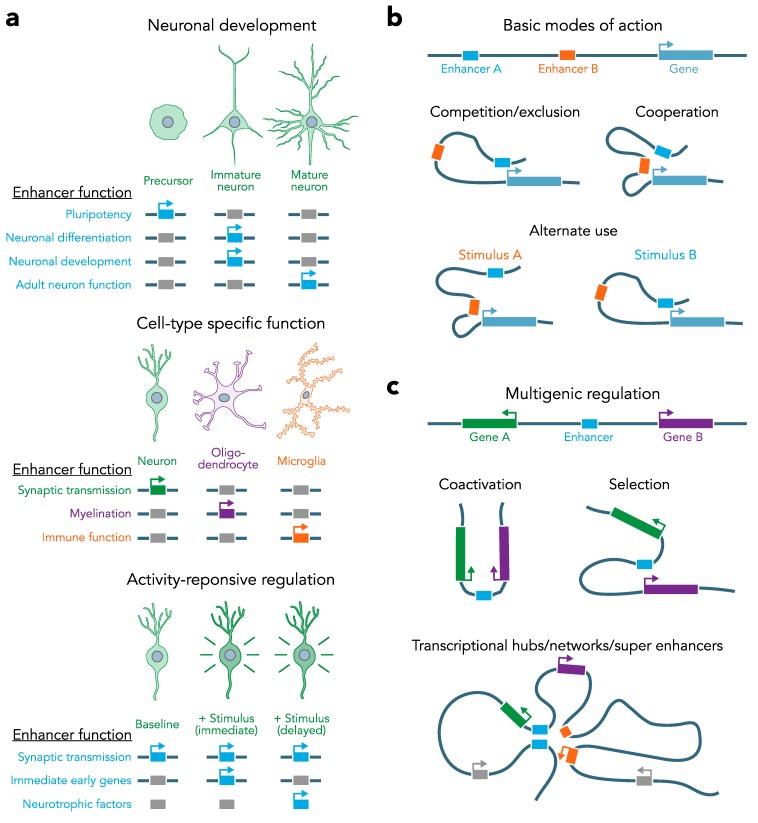Figure 2.
Developmental, cell-type specific, and stimulus dependent enhancer activity and looping functions. a, Distinct enhancers become active at specific developmental stages and in specific cell types (Top). These enhancer activity profiles regulate expression of cell identity genes in a spatiotemporal manner ensuring proper cell fate and function (Middle). A subset of enhancers responds to stimulation. These enhancers typically regulate activity-responsive genes and increase their expression in response to a certain stimulus, with specific temporal windows after stimulus induction (Bottom). b, Basic modes of action for enhancer looping in gene regulation. Genes can be regulated by multiple enhancers that compete with each other, act simultaneously, or alternate depending on the context or stimulus. c, Putative mechanisms driving coordinated regulation of many genes by single enhancers or enhancer-enhancer interactions. An enhancer can act on multiple genes in parallel, serving functions of coactivation or selection. Likewise, super enhancers or transcriptional hubs may co-localize related genes to drive expression of specific gene programs that define key cellular functions or phenotypes.

